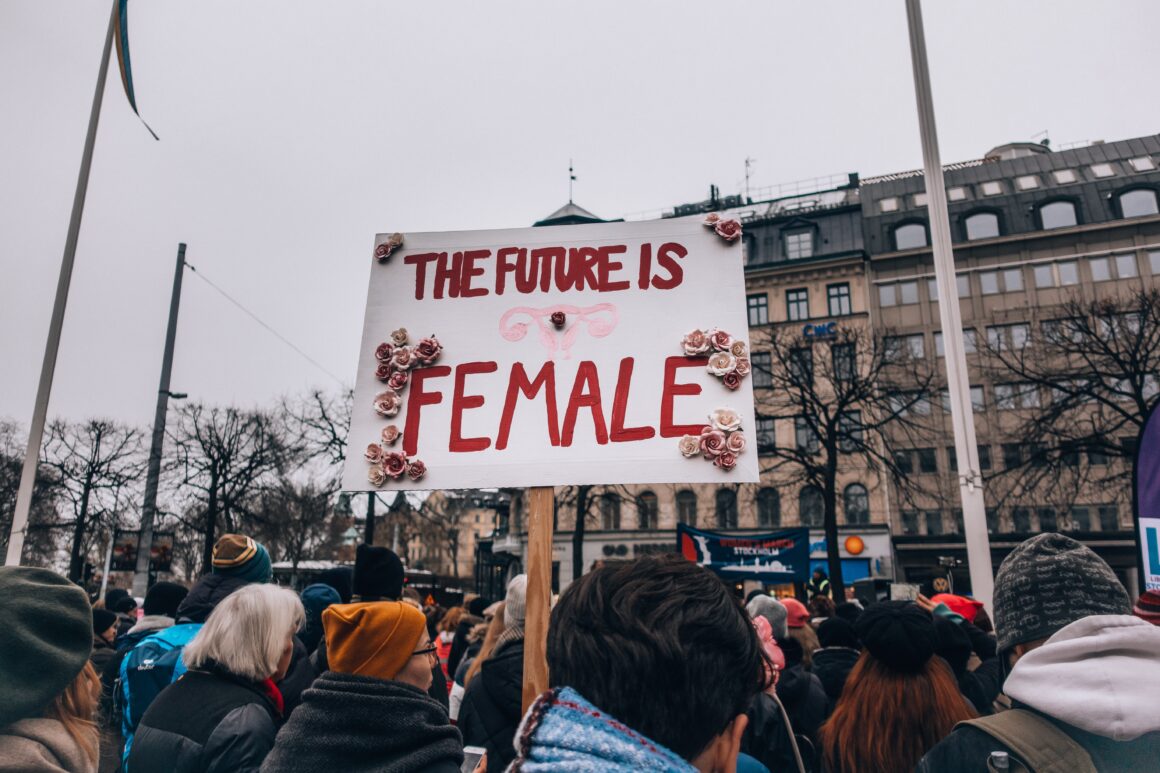One obvious indicator of a woman’s continuous struggle for equality is her inability to receive proper healthcare. According to Carol S. Weisman, a professor of Public Health Sciences at Penn State, “the term ‘women’s health’ typically connotes reproductive functions and women’s capacity to produce and nurture children.” While most people view women’s health issues as being specifically related to birth control and abortion services, MedlinePlus, a website that is run by the National Library of Medicine, defines women’s health as “the branch of medicine that focuses on the treatment and diagnosis of diseases and conditions that affect a woman’s physical and emotional well-being.” Although this definition might at first seem vague and unspecified, the government officially recognizes women’s health as being related to a broad range of reproductive and family planning services, cancer screenings, and sexual education. Since the legalization of abortion in 1973, abortion has been included in women’s health measures and precautions. Therefore, all women’s health services are intertwined.
Women’s healthcare providers spur an immense amount of positive change within the communities that they serve. Contrary to popular belief, abortion procedures are not the only services provided by women’s health institutions such as Planned Parenthood; these organizations also offer birth control, sex education, cancer screenings, and prenatal care. According to a 2015 report released by the Government Accountability Office: “As of 2014, [Planned Parenthood] affiliates’ health centers served over 2.8 million individuals, 83 percent of whom were age 20 or older. Also, among the individuals served, 79 percent had incomes at or below 150 percent of the federal poverty level. Testing and treatment for sexually transmitted infections accounted for the largest proportion of medical services provided by affiliates. . . abortion services accounted for 3 percent of affiliate medical services.”
Without women’s health organizations like Planned Parenthood, disease screenings and treatment would be widely unavailable to women of poverty-stricken communities.
Regardless of the positive impact that women’s health organizations have on low-income areas, debate ensues over whether abortion should remain legal. Because pro-life ideals are often based on the guidelines of certain religious practices, numerous anti-abortionists cite morality as their main reasoning behind wanting to shut down women’s health centers. The ethical practices of women’s healthcare organizations, such as Planned Parenthood, have been questioned in recent years because of their involvement in abortion services. For example, in an interview with Breitbart, a right-wing media outlet, former governor of Arkansas, Mike Huckabee, stated that “Planned Parenthood isn’t purely a ‘healthcare provider’ any more than a heroin dealer is a community pharmacist.” Many conservative politicians try to incite resistance against Planned Parenthood, but they fail to realize that dismantling support and funding for women’s health services prevents women from receiving comprehensive healthcare.
The most widely known example of an attempt to restrain women’s healthcare happened as recently as January of 2017. During his first days of presidency, Donald Trump directly attacked women’s health with his extensive change of the Mexico City Policy, often referred to as the “global gag rule.” This gag regulation has been reinstated during every republican presidency since Reagan’s administration, and it essentially prevents government money from being distributed to private American organizations that help facilitate abortion education and practices. Trump amplified the authoritative ordinance by stating that American organizations and nonprofits could no longer fund any international women’s health services, which directly cut off necessary funding to third-world countries that need child health care, disease prevention and treatment, and contraceptives. Defunding healthcare organizations that provide abortion services causes an immense amount of harm to the surrounding poverty-stricken communities. As stated by Avert, a UK-based HIV and AIDS educational organization, “while the vast majority of new HIV infections in sub-Saharan Africa occur in adults over the age of 25, HIV disproportionately affects young women. More than 4 in 10 new infections among women are in young women aged 15-24.” Unfortunately, amidst the outbreak of sexually transmitted diseases in rural areas, Trump’s recent reinstitution of the gag rule would cut off funding to both Africa and Asia for HIV/AIDS preventative education and reactive testing.
Authoritative decrees that target women end up harming the world’s most vulnerable women and children, which immerses the term “pro-life” in a pool of undeniable irony.
The gag rule is an impeccable strategy used to oppress women; bureaucratic power plays such as the gag rule have the intended effect of stifling a woman’s right to control her future. Restraining financial subsidies to women that need our assistance has inadvertently emphasized the need for feminism. In the wake of national events that have mirrored the gag rule’s same tone of condescending paternal misogyny, women are recognizing the need to have readily available healthcare.
With Trump’s harsh reinstitution of the global gag rule, women are being directly punished. Americans are struggling to reconcile the dichotomy between being pro-life and being pro-women’s health; meanwhile, the state of current gender equality hangs in the balance.


